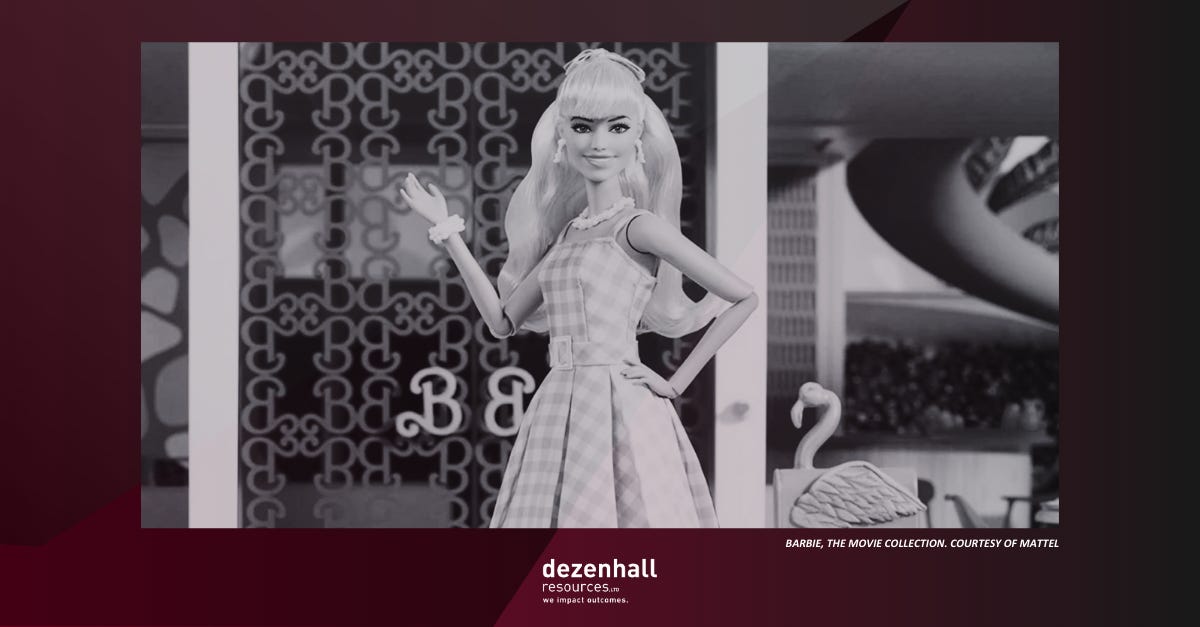Crisis Management Barbie – Come on Barbie… Back in the Box
Spoiler alert: The following contains spoilers about Barbie, the movie. If you haven’t seen the movie and want to be surprised, leave this unread in your inbox until then. Additionally, this is not a sponsored post. However, it would not be surprising if it was because the Mattel and Warner Brothers marketing teams have put on a masterclass with their efforts promoting this movie.
Barbie is back. Unless you’ve been living in a secure bunker, under a rock, on a faraway uninhabited island, the Barbie marketing team has infiltrated your TV, inbox, social feeds and local establishments.
Since 1959 Barbie has held a special place in the hearts and minds of children and I am no exception. Barbies and their curated wardrobes including tiny shoes, career accessories, dream homes and cars were mainstays of my youth. Sparking imagination, bringing entertainment and important life lessons – like you can be anything you want to be, or how to handle envy when my sister, who is nearly six years younger, was gifted with a Barbie dream house with a working elevator, but I digress.
Like many, I saw the Greta Gerwig directed, Warner Bros. produced movie over the weekend. I will let the cable news pundits debate Barbie’s “hidden agenda” instead I believe a more useful exercise is analyzing the film’s story arc, which includes some essential lessons in crisis management.
Barbie, played by Margot Robbie, (and Ken, played by Ryan Gosling) depart Barbie Land for the real world, breaking the barrier between the two worlds. This is discovered by Aaron Dinkins, a Mattel intern, played by Connor Swindells, who alerts the company’s leadership about Barbie and Ken’s venture into the real world. Mattel CEO, played by Will Ferrell, and his similarly stuffy-suited C-suite are disorganized and frantic, exchanging variations of “what do we do,” “how did this happen,” “who is responsible,” and “oh this is really bad for us.”
While heavily humorized (because entertainment), this is one of the more accurate pictures of the immediate internal corporate reaction to learning of a crisis that I’ve seen on TV or in film. In reality, it’s a completely understandable and human reaction to panic momentarily. Even the most poised or stern executives are generally caught by surprise when an acute crisis strikes. This, of course, is counter to the prevailing cultural belief that company executives sit around large conference room tables to plot, scheme and keep things hidden from people.
Contrary to what various movies and media outlets portray, a crisis is rarely an elaborate plan gone wrong that is orchestrated by malicious executives sitting in their ivory towers. More often than not crises are human errors (or a series of them) that become “unfigure outable” by the human(s) that made those errors and, like the intern in Barbie, must bring the problem to the company’s top brass.
After taking in the news and getting their wits about them (sort of, again, entertainment), Mattel executives immediately think back to their last crisis when Skipper, Barbie’s younger sister, did something similar many years prior. Since it was just Skipper, it was a blip on the radar and did not harm Mattel’s reputation.
Then comes the ideating to solve the problem quickly – which, in this case, looks like people talking over and tripping over one another, complete chaos. Amidst the madness, one of the nameless deputies to Ferrell says something to the effect of “We need to put her back in the box.” Ferrell quickly agrees and exclaims along the lines of, “That’s it, that’s the solution, we just need to get Barbie back in the box,” meaning her original (albeit life size) pink and clear plastic packaging.
A few seconds of group congratulations on their brilliant idea, and then reality sets in as to what that will take – finding Barbie in Los Angeles, luring her to Mattel headquarters, educating her as to why going back to Barbie Land is the right thing to do, and ultimately physically getting her back in the box.
Unfortunately, some practitioners of the crisis management discipline peddle that getting back in the box is a) possible and b) a viable path to successfully manage a crisis and get an organization back to business. In the decades Dezenhall Resources has been advising clients, we have yet to see this work. Sure, getting Barbie back in the box is a seemingly easy solution, but crisis management is complicated because there are humans involved, a lot of different stakeholders and more complex issues that don’t neatly fit in any one box.
There are differing and often competing external and environmental factors to take into account in every crisis – consumers, shareholders, employees, regulators, plaintiffs’ lawyers, media, influencers and more. Like most crises I see, there is a true conflict between Mattel and Barbie – it’s not simply a communications problem. They are one another’s motivated adversary; each has a vested interest in seeing the other fail in meeting their ultimate objectives.
Getting a crisis back in the box is a myth, a cliché that may make an organization feel better but won’t solve the problem or keep it from happening again in the future.
How Barbie’s story ends is not material to the crisis management lessons in the movie. Like many corporate leaders, Mattel’s CEO learns the hard way how difficult truly managing a crisis is and falls down more than a few times along the way. The accuracy of the crisis management story arc in Barbie was, I’m sure, not Gerwig’s priority. However, it’s beyond refreshing to see in entertainment rather than the false (but admittedly sexier) “fixer” narrative that often graces the big screen.
Life in plastic, it’s fantastic… and too good to be true.



